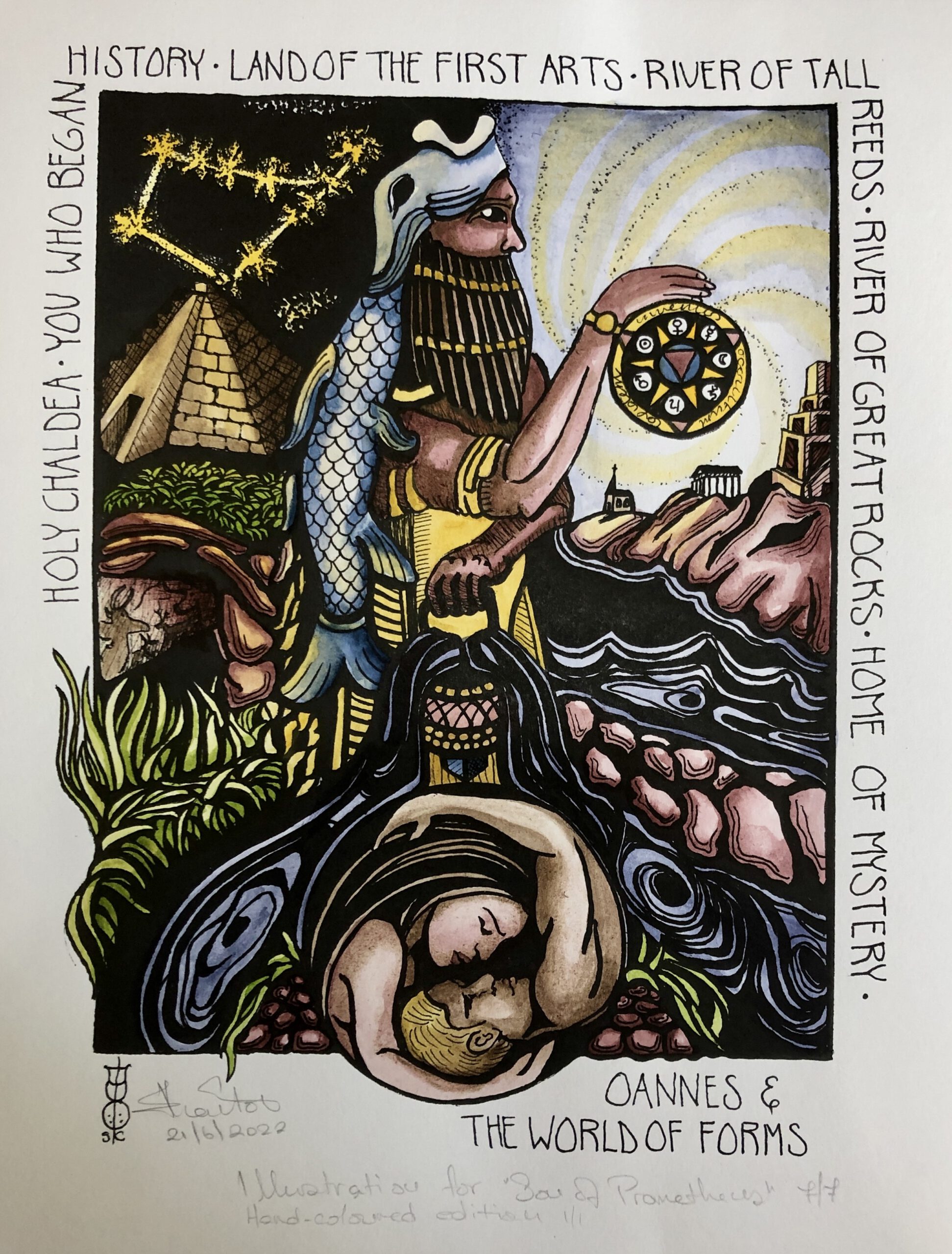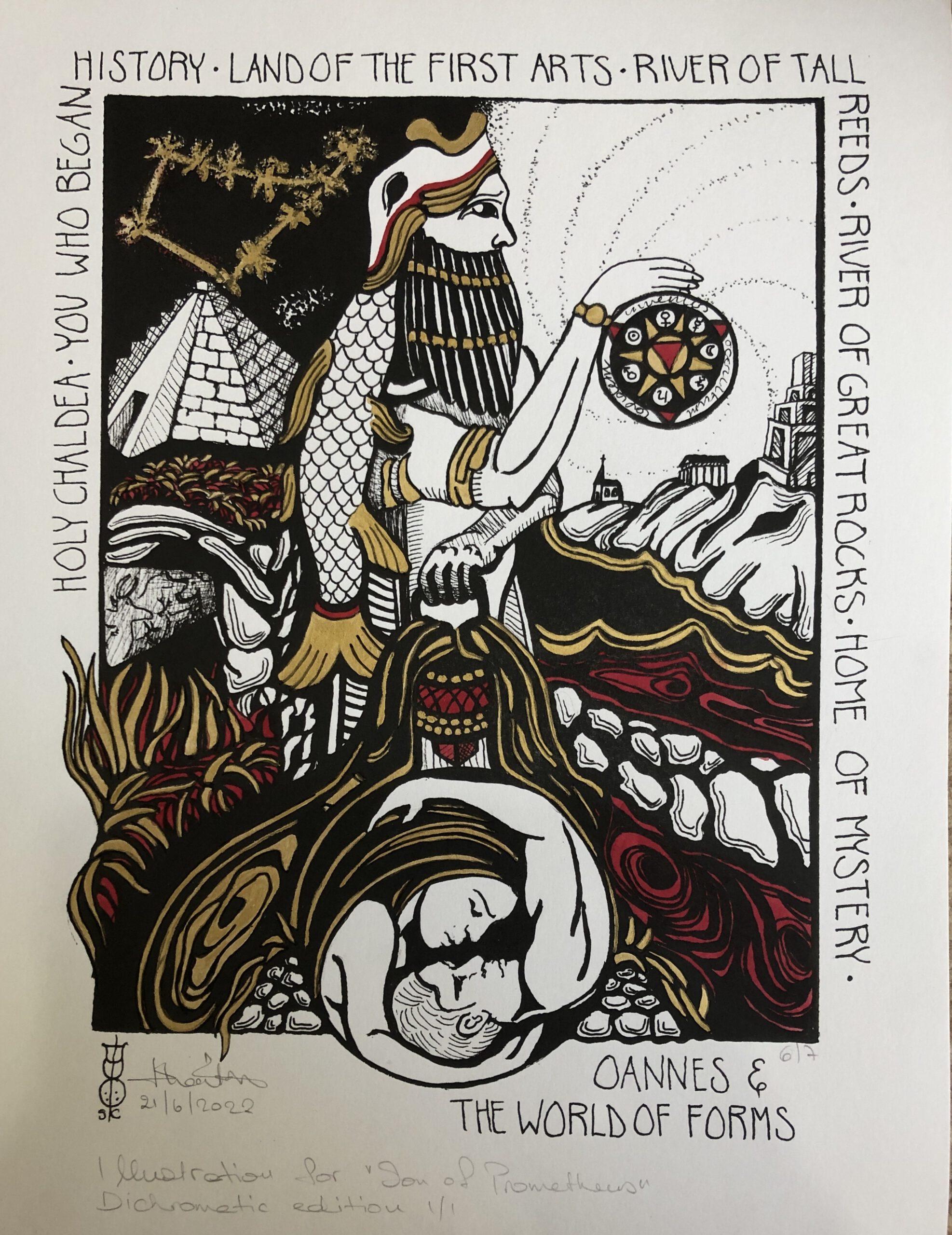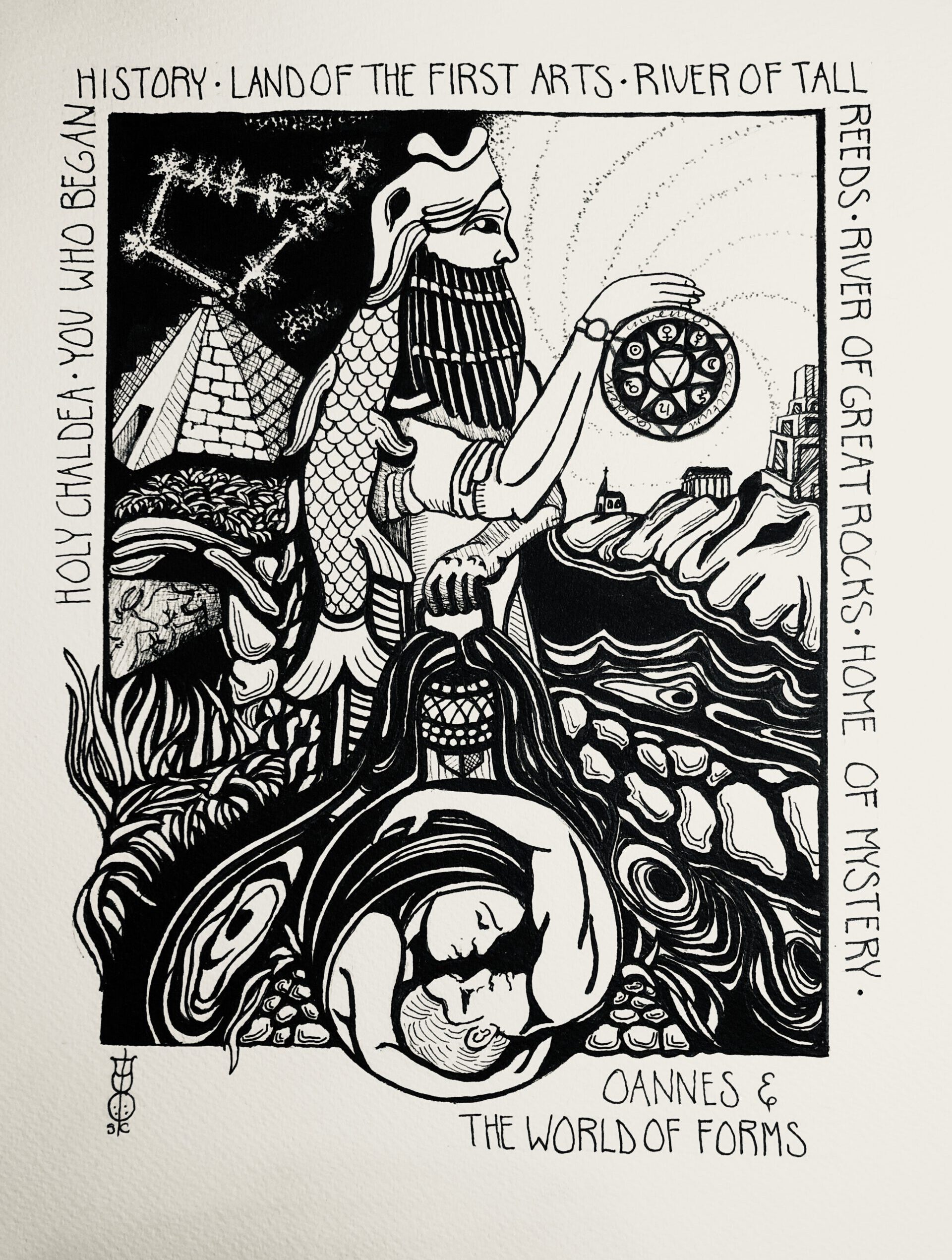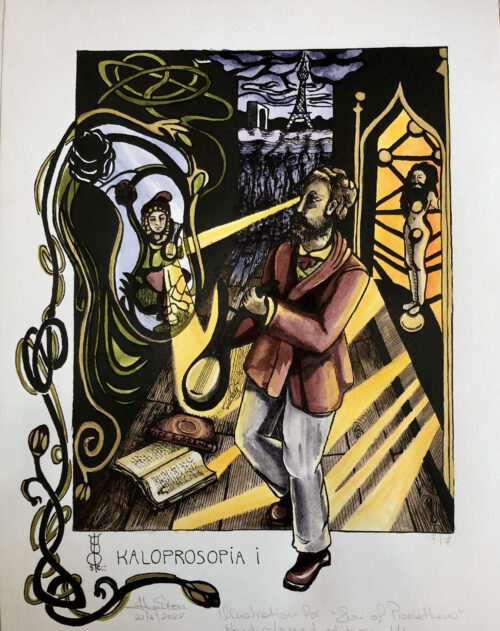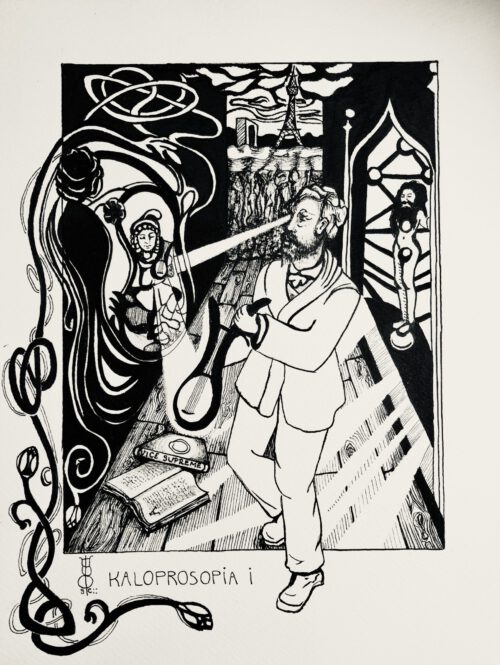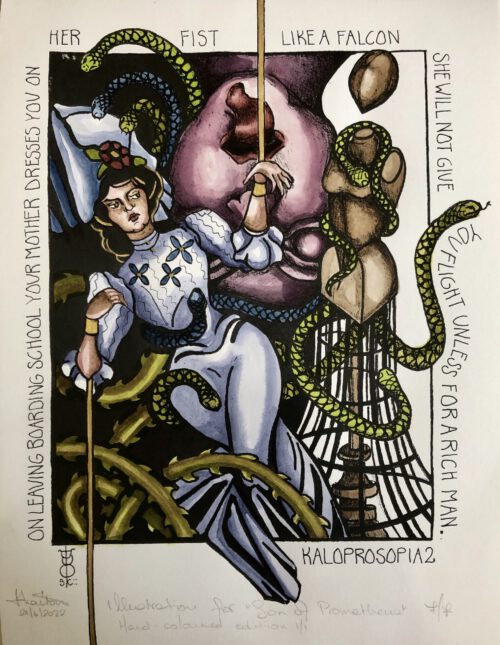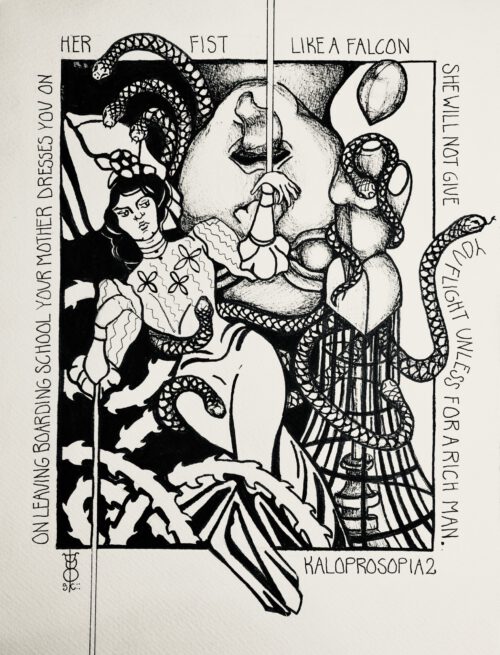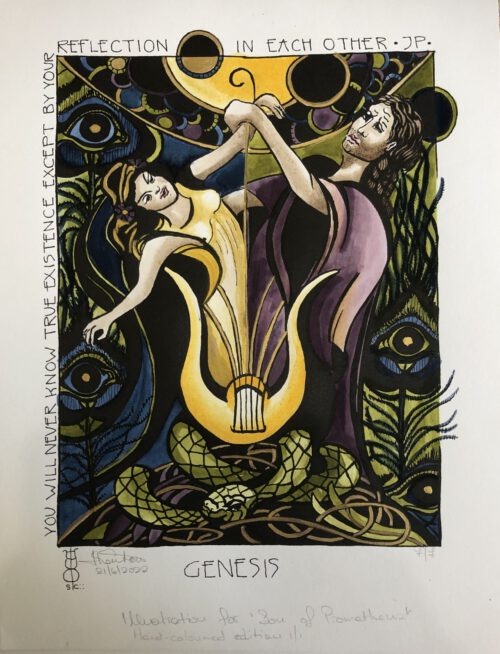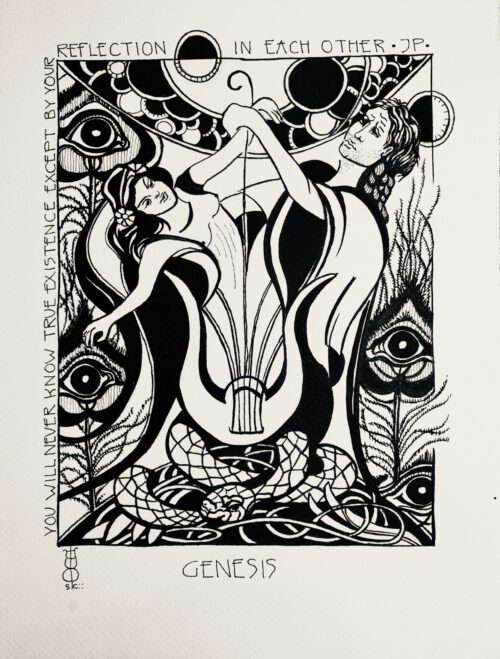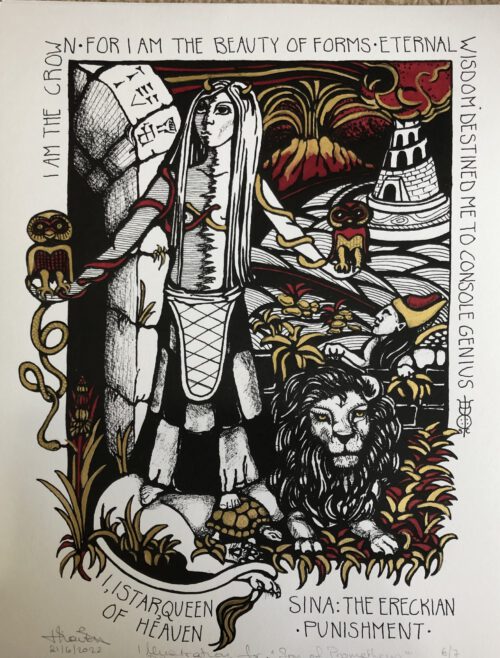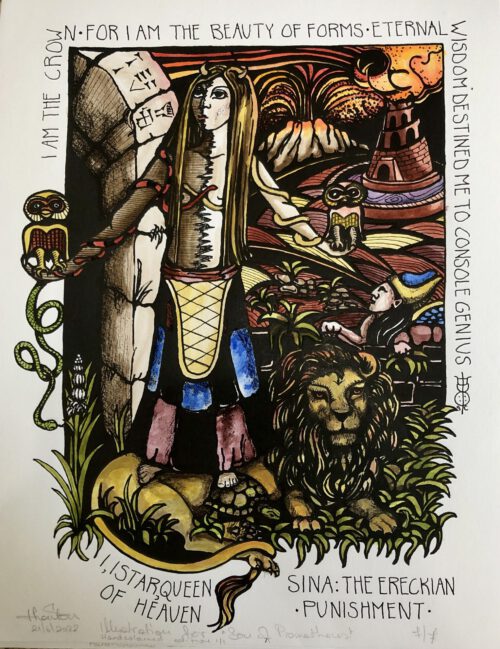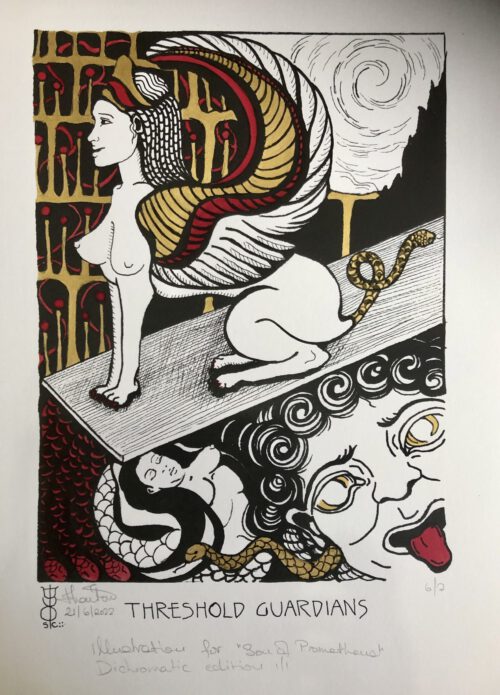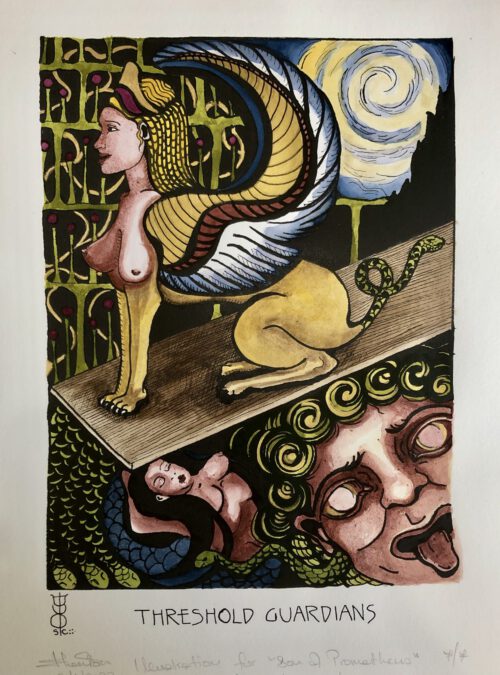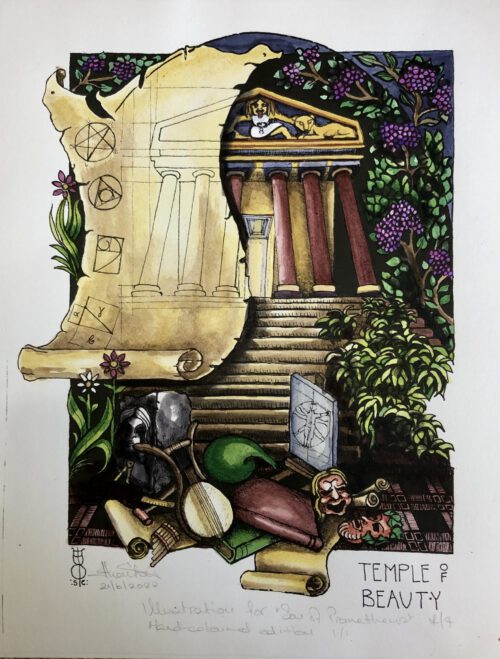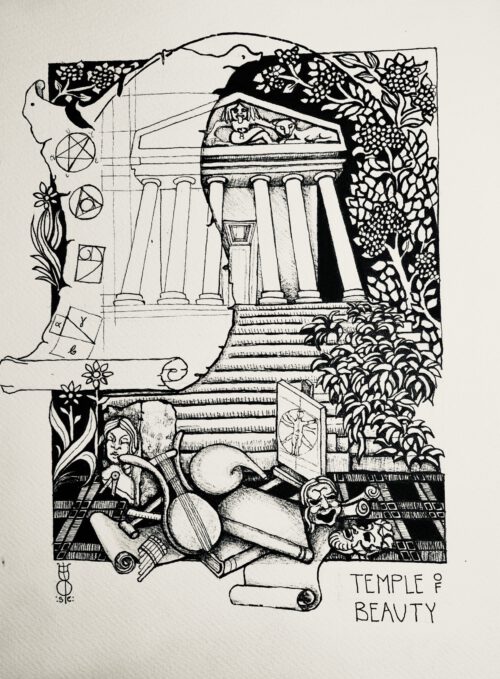From the illustration description in Son of Prometheus:
This illustration reflects quotes from Péladan’s play Le Fils des Etoiles, and his comparative historical work, Antiquité Orientale respectively:
Holy Chaldea, you who began history,
Land of the first arts,
Home of wheat and home of mystery, Holy Chaldea!
Oh, calm Euphrates! Oh, impetuous Tigris,
River of tall reeds, river of great rocks,
Who fertilise the land of Oannes!
Ereck and Ur, of Babylon, the sons of Oannes and Ilou
shine priests, poets, and seers on the world
missionaries of peace and sowers of beauty…
You reign, Chaldea, in the universal soul
Through those from Ereck and Ur, Babylon, sons of Oannes and Ilou…
How have you survived through the centuries!”
“Oannes, the amphibian god who emerged from the Red Sea and went to the beach of Babylon to teach mankind during the day, left them a book… Egypt will not give us anything more than repetitions of what it has already delivered; those of Chaldea will restore to us the second page of humanity.”
In the image, Oannes holds a bucket of holy water and pollen – a frequent attribute of the winged genies of Mesopotamian art – from which the two rivers, the Tigris and the Euphrates spill, lined with rocks and reeds respectively. Between them, the first man and woman are gestated in a bubble. See pages 281-289 for detail on his significance and the symbolism of the fish-mitre. Instead of a cone (the other attribute often seen in Mesopotamian depictions), he holds a simplified version of the Azoth emblem from Basil Valentine’s Azoth of the Philosophers (1659). It depicts the seven operations of alchemy, and here reflects the microcosmic-macrocosmic correspondences that spiral out to create the physical world – the world of forms. Stretching along the banks of the Tigris, iconic architectural structures from various periods reflect Péladan’s message that stone monuments confer immortality; the river also denotes the passage of time. Near the Euphrates, under the constellation of Sirius, the pyramid above and the cave below provide a reflection of the microcosm and macrocosm, both holding their own teachings. The pyramid is separated from the other buildings to reflect Péladan’s distinction between Egyptian culture, and the civilizations from Chaldea onward.
Available in 4 highly limited Editions:
1 Original pen and ink freehand illustration in black and white (SOLD) by Sasha Chaitow on Saunders Waterford rough Watercolour paper, 31×41 cm as reprinted in Son of Prometheus: The Life and Work of Joséphin Péladan; Sigilized by the artist.
Only 1 print fully hand-colored in antique, drawing, and calligraphy inks by Sasha Chaitow on smooth watercolour paper, c.30×42 cm. Signed, numbered*, dated by the artist.
Only 1 print dichromatically hand-colored (red + gold) in antique, drawing, and calligraphy inks by Sasha Chaitow on smooth watercolour paper, c.30×42 cm. Signed, numbered*, dated by the artist.
3 black and white prints on smooth watercolour paper, c.30×42 cm. Signed, numbered*, dated by the artist.
* numbered as part of one of seven print sets, i.e. 3/7, 4/7, 5/7 (black and white), 6/7 (diachromatic) or 7/7 (fully colored). Print sets 1 and 2 are privately owned and currently not for sale.

